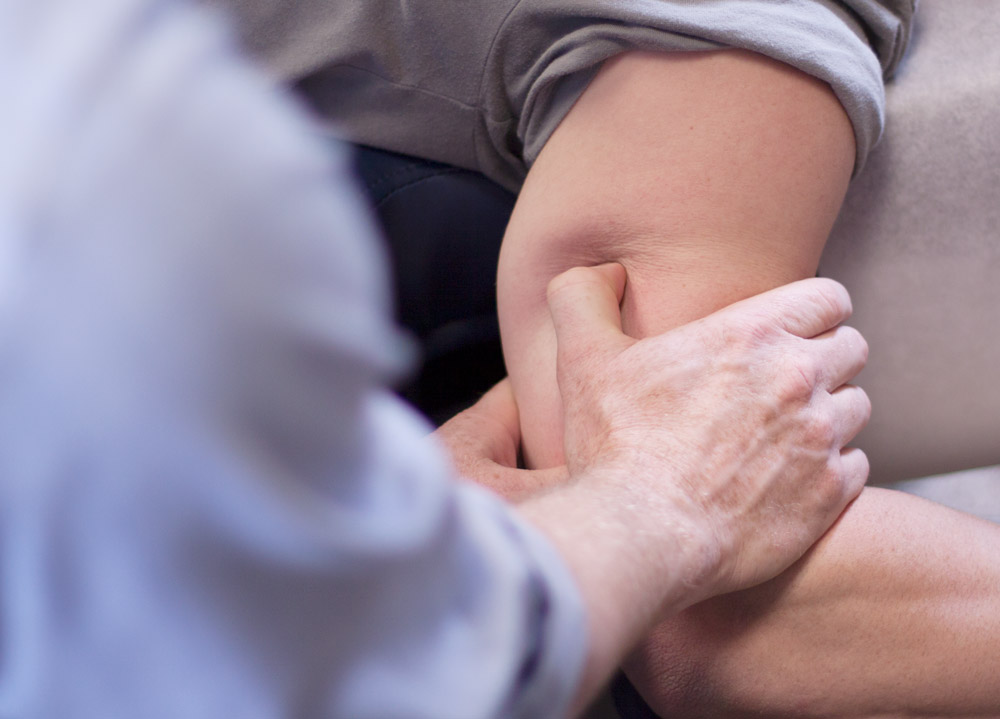Fascial Distortion Model (FDM)
The Fascial Distortion Model is a method of identifying the source of pain or injury by tuning in to the patient's description of their symptoms. Fascial distortions are corrected with hands-on deep pressure application with measurable, dramatic results.
Active Spine & Sport uses Fascial Distortion Model to reduce pain and restore mobility without the use of drugs or surgery.
FDM Treats these and many other conditions:
Achilles Tendinitis
Ankle Sprains
Carpal Tunnel Syndrome
Frozen Shoulder/Adhesive Capsulitis
Golfer's / Tennis Elbow
Hamstring Pull/Strain
Hip Flexor/Psoas Tendinitis
Hip Pain
Iliotibial Band Syndrome
Knee Sprains
Low Back Pain
Neck Pain
Patellar Tendinitis
Plantar Fasciitis
Rotator Cuff Strains
Sciatica
Shin Splints
TMJ
Tension Headaches/Migraines
Whiplash
Fascia is the thin fibrous connective tissue surrounding all the muscles, tendons, joints, and organs in your body. It’s a flexible web beneath the skin holding everything together that is vulnerable to tears, folds, wrinkles and other distortions that can result in pain and injury. Traditional orthopedics look at these injuries as something the body needs time to heal (usually a few weeks.) Using the Fascial Distortion Model, the specific fault in the fascia is identified and corrected often resulting in the reversal of the injury and complete elimination of pain without the need for a period of rest and recovery and typically with just one or two treatments.
The Fascial Distortion Model identifies six different states of facial dysfunction:
Triggerband: The most common of all distortions. They are twisted or wrinkled fibers of connective tissue or fascia which cause a burning or pulling pain. Patients generally indicate trigger band distortions by sweeping their hand in a sweeping motion along the affected length of fascia.
Herniated Triggerpoints: Tissue that has pushed through the overlying fascia. Patients describe these as deep aches and show them by pointing or pushing with their fingers on the tender area.
Continuum Distortion: Injuries to an area where a ligament or tendon is transitioning to bone, commonly referred to as a sprain of a joint. Patients describe these as a sharp pain in one spot and often point to the area using only one finger but do not push or rub on it.
Folding Distortion: A three-dimensional alteration of a fascial plane that occurs around the joints as the fascia expands and contracts incorrectly. Patients usually show this distortion by cupping a joint with a hand. It is verbally described as an achy pain in a joint.
Cylinder Distortion: Overlapping of fascia coils that cause pain mostly in non-jointed areas. Discomfort from cylinder distortion is described as pain that jumps from one location to another or causes numbness and tingling.
Tectonic Fixation: The inability of fascial surfaces to glide resulting in what patients describe as tightness or stiffness.
“Active Spine and Sport is the best. Everyone there genuinely cares for the patients like they are friends. The doctors really want to keep you healthy and work tirelessly to make you feel better.”





